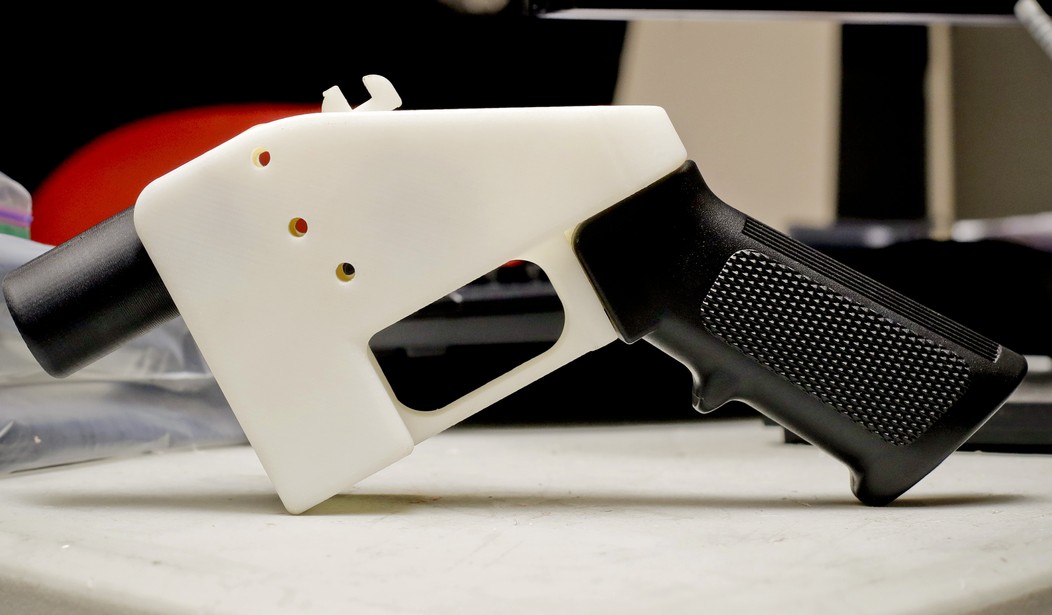Anti-gunners don’t like so-called ghost guns, and it’s easy to see why. After all, there’s absolutely no way to control who can and can’t get these firearms. While many of us see this as a feature, they see it as a bug.
Then again, these are the people who want to implement AI that would decide when you could fire your weapon in the first place, so their opinions on anything are likely to be suspect.
However, with “ghost guns,” they actually may make some kind of headway, at least from a legality standpoint. Yet as I’ve noted in countless posts, there’s absolutely no way to stop bad actors from building firearms.
I’m not alone in that opinion, either.
The problem with imposing legal restrictions intended to stop a practice that is designed to evade legal restrictions is that you were outflanked before you even started. That’s the challenge for President Joe Biden and lawmakers around the country as they consider limits on “ghost guns”—homemade guns that are created, owned, and used off the government’s radar. Do-it-yourself manufacturing has always hobbled authorities’ ability to control things they don’t like, and the modern ghost gun movement specifically evolved to put personal armaments beyond the reach of the state.
“The White House is weighing a number of gun safety proposals as it looks to deliver on President Joe Biden’s campaign promises,” Politico reported this week. “Among the executive actions under consideration by the administration is one that would require buyers of so-called ghost guns — homemade or makeshift firearms that lack serial numbers — to undergo background checks, according to three people who have spoken to the White House about their plans.”
Actually, this is somewhat misleading. Under current federal law (some states have tighter rules) as interpreted by the Bureau of Alcohol, Tobacco, Firearms, and Explosives, “[a]n individual may generally make a firearm for personal use. However, individuals engaged in the business of manufacturing firearms for sale or distribution must be licensed by ATF.” Basically, the law already regulates the manufacture of firearms for sale no matter how the gun was created.
Reason‘s J.D. Tucille goes on to note that these regulations would really just impact things like incomplete receivers and firearm kits.
He’s right. But he goes on to make a similar point to something I’ve pointed out before, and that’s how even such a ban won’t stop homemade firearms from being build.
That might successfully target products explicitly marketed as 80 percent receivers, but those are conveniences for use with a jig and a few tools, as then-Reason producer Mark McDaniel detailed in 2018. Going beyond such products threatens to imperil whole aisles at home improvement outlets if the language is rigidly enforced.
“It’s hard to imagine stopping it, short of banning 3D printers or metal pipes,” Slate’s Ari Schneider observed recently of the FGC-9, a semiautomatic weapon that’s the latest brainstorm of DIY gun enthusiasts. “Most of the gun is 3D-printed, while the rest includes inconspicuous parts available at hardware stores,” he noted.
Plans for the FGC-9 are available at the Defcad repository so that anybody can try their hand at creating ghost guns without being limited to the kits that trouble activists lobbying Biden and Virginia legislators.
That’s the main idea behind the modern ghost gun/DIY firearms movement. It’s not just a hobby, it’s a political movement that Cody Wilson, the inventor of the 3D-printed Liberator single-shot pistol from which the FGC-9 descends, described to Reason in 2018 as “a war on power itself.” Wilson, who was briefly sidelined by sexual assault charges, sees his efforts as part of a broader push for personal liberty that also includes Bitcoin and payment systems that enable people to work around centralized authority. The Defense Distributed organization he founded manufactures Ghost Gunner CNC machines for finishing 80 percent frames*. The larger movement continues through more decentralized outlets.
And let’s be honest, the moment people could share plans for homebuilt firearms on the internet was the moment gun control hopes and dreams actually died.
If anyone who has a 3D printer can build a gun–and the odds of them banning 3D printers is about as good as Joe Biden making a coherent argument for more than two seconds at a time–then there’s no hope in hell of ever stopping people from getting guns. Yes, some of these people will be bad actors, but I hate to break it to you, those guys aren’t exactly having a hard time getting guns in the first place.
Instead, home CNC machinery or 3D printers can enable people to build guns they don’t have to tell the government about, something a government uninterested in tracking the exercise of our Second Amendment rights should have no issue with. The fact that some people do illustrates that they’re more interested in tracking guns than actually stopping crime.
“Ghost guns” are never going away. That genie is long out of the bottle. The real battle is about who is going to get to make those guns, whether it’ll just be relegated to the criminals or whether law-abiding citizens will be able to do so as well.
There’s never been a reason to stop the law-abiding from doing so and the criminals won’t be impacted by any new rules, so banning these types of weapons will be nothing other than a waste of time.








Join the conversation as a VIP Member